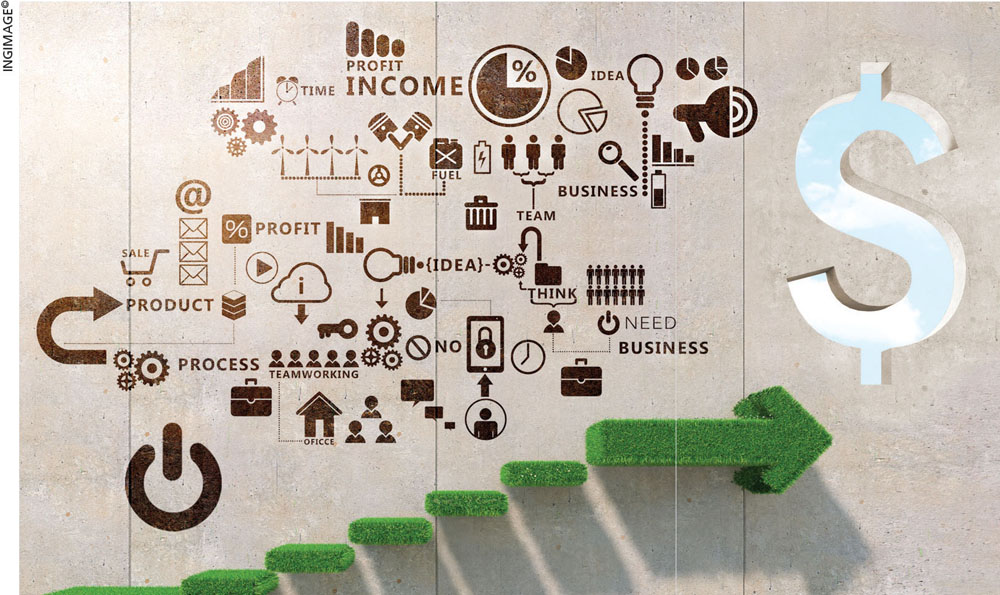MERCHANDISING STRATEGY

REVENUE FROM FOOTFALLS
Marketing strategies to influence purchase decisions – Dr. Muneer Muhamed
Organised retailers have been spending millions of rupees running special offer ads in the media. But their most important sales pitch hasn’t even taken place yet! How do you convert potential footfalls into revenue?
Well, visual merchandising and customer service must work in tandem with advertising and marketing efforts to influence customers to buy.
Visual merchandising is a primary retailing tool in guiding customers in the purchase process.
Studies show that those who are new to a store or consider buying a new brand for the first time are much more likely to use visual merchandising cues such as posters, displays, LED screens, brochures, banners and directional signage.
And customers who frequent a retail establishment are more likely to make purchase decisions based on previous experiences or consult sales personnel.
Moreover, evidence exists that products and services requiring higher levels of customer involvement increase the role of visual merchandising communication in the decision-making process. Updates can be subtle and yet, significantly impact the customer experience and perception of that experience.
According to customer surveys, perceived waiting times at cash counters fell by 50 percent after a leading retail chain installed TVs showing some programmes at the cash counters. This is also a good opportunity to earn revenue for the retailer through advertisements.
The bottom line is that people hate waiting in queues and wasting time. So if you help them make that time more productive, overall customer satisfaction will increase. Here’s how you can develop a better visual merchandising strategy…
Knowing how your customer shops is vital to retail success. Research is the only way to base your strategy on actual consumer trends and apply it to the marketing environment of individual stores.
Don’t forget to obtain inputs from the retail level because the best source of information is store employees. Understand how people are spending their time in your store. Are they waiting in line for long? How much time do they have to absorb your messages?
If customers shop fast, your signage is going to be less effective – and you will need to send out fewer and simpler messages.
And if customer interaction time is limited, you may want to consider replacing text messages with visuals. Photographs are almost always more convincing than words and people are likely to react more strongly to images. Dynamic images increase retention at an even higher rate.
Make sure that all marketing efforts ranging from your website to shopping bags are sending coordinated and consistent messages about your offering.
It’s also important to drive branding and colour combinations well. Given that most retailers charge for carry bags, make them more attractive so that customers will reuse them.
Consider using in-store interactive technology as a tool to make your customers’ shopping experience more convenient. Hi-tech displays are product driven, informational and easy to manage.
Touchscreen kiosks are in vogue to help customers complete simple tasks or seek answers to product questions. Much of the new sign and graphics technology will enable stores to create images quickly, and change messages to meet corporate and store level objectives.
Find ways to accommodate busy shoppers by using merchandising and aisle design to create convenience. Customers need quick answers to product features or performance questions and appreciate a reasonable variety of choices. Anything that helps them accomplish these goals while making the shopping experience as pleasant as possible makes their decision to buy from you easier.
Customers prefer to shop in an environment that’s friendly, inviting and comfortable. However, the interpretation and application of what ‘comfort’ means has never varied so greatly.
In the financial services industry for instance, the role of visual merchandising in customer services is becoming a hot topic. After careful review of customer interaction in stores, many industry leaders are changing the traditional look and feel of banking services by testing complete branch overhauls.
Use data analytics and predictability to change messaging for individual customers on their mobile devices and even on shopping carts. Ensure that you recommend missed items that may have been purchased before or go well with an item picked up right then.
The possibilities are endless with technology.
What’s critical to the success of any visual merchandising strategy is the degree to which store level employees are embracing your programme and participating in it. Make sure that managers know what’s in it for them – and what they are expected to do.
Even if you have sold your bosses on the promo concept, it may not trickle down to the store level. Consider using incentive programmes to inspire greater involvement of front line employees.





Leave a comment